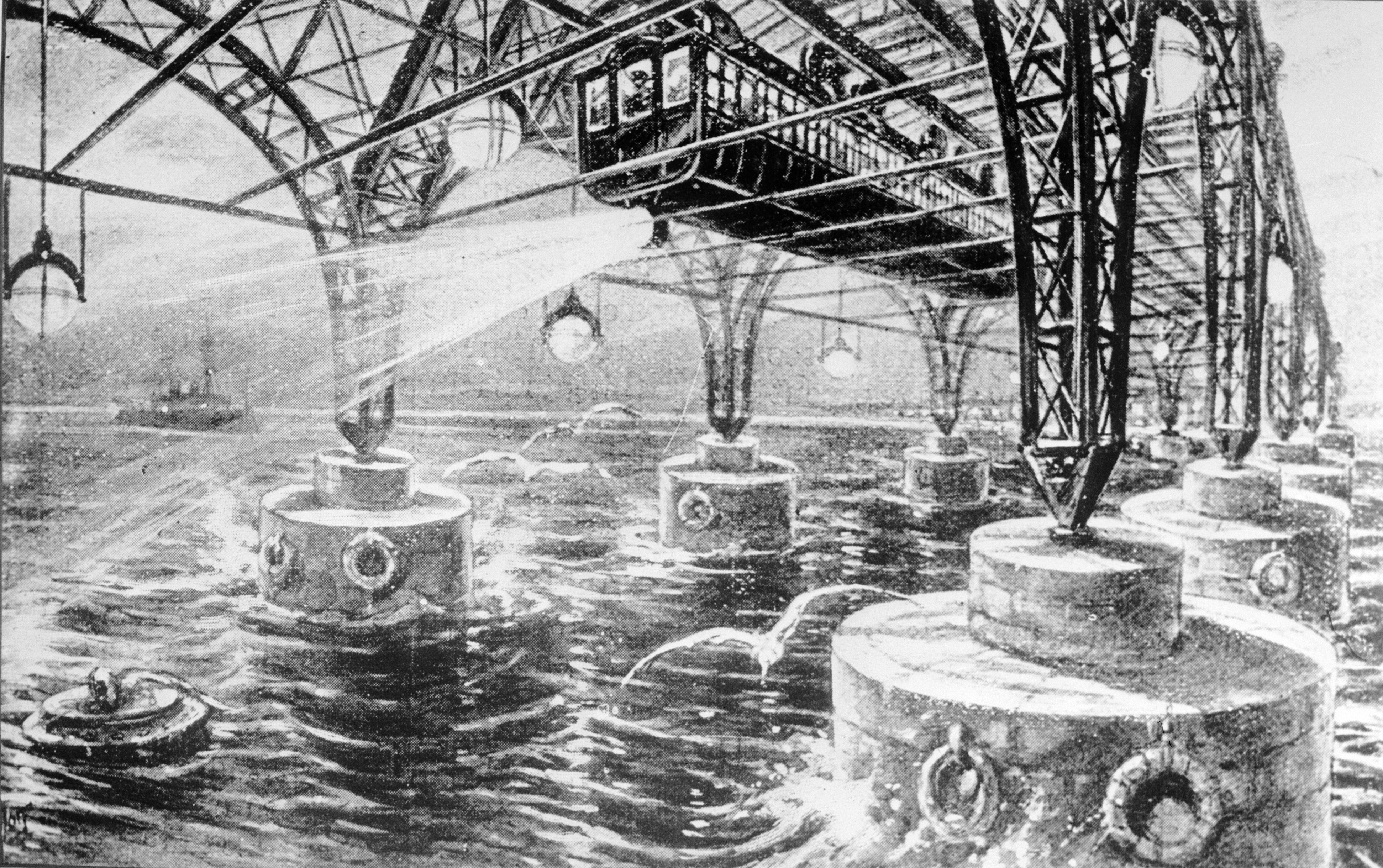The foreign secretary, Boris Johnson, has hinted at building a road bridge between the UK and France.
Although he didn’t go into specifics, Johnson said it was “ridiculous” there was only a single railway line connecting the two countries.
He added: “We are establishing a panel of experts to look at major projects together. Our economic success depends on good infrastructure and good connections. Should the Channel Tunnel be just a first step?”
But would such a project be feasible?
Old ambitions
The idea of building a bridge across the English Channel is nothing new. In fact, there were design proposals as far back as the 19th Century.
A 1889 edition of the Spectator talks about engineers who want to construct “a huge iron bridge across the Channel”.
“A detailed plan to this end … was read on Tuesday before the Iron and Steel Institute, assembled this year in Paris. The success of the enormous spans used at the Forth Bridge, 130 ft. above high-water mark, have shown the project to be by no means impossible.”
It adds: “The scheme, if ever carried out, will cost, it is calculated, about £34,000,000,—a fact in itself enough to con- demn the proposal, when a system of steam ferry-boats could be managed at a tenth of that sum.”

More recently, detailed plans for a 21-mile toll bridge, suspended at 67m, were submitted to Margaret Thatcher’s government in the 1980s. Cars would have paid £5.60 and lorries £8 to cross.
The engineers estimated the cost of building it would be around £3bn, but said they could raise £220m in tolls every year.
How difficult would it be these days?
Dr Stergios Mitoulis, a lecturer in bridge and structural engineering at the University of Surrey, told FactCheck that building such a bridge now would be perfectly possible in theory. After all, there are already longer bridges elsewhere in the world, such as the Jiaozhou Bay bridge in China.
“I certainly believe this is a feasible project,” he told FactCheck. “Certainly this is something that can happen within three to five years from the day that the designer puts the first line on the paper.”
But there is no doubt the project would be hugely challenging and costly.
“The main challenge is usually the local soil conditions,” Mitoulis explained. “And then someone needs to think about the problems along the deck, which is the horizontal part of the bridge. Having a bridge as long as 22 miles means that someone has to provide certain design considerations, such as expansion joints every 500m.
“So its a combination of a very expensive foundation under the sea bed, and obviously certain considerations for the design and construction of the deck. But there are techniques that can support very long decks.”
Dr Alfredo Camara, from City University’s Department of Civil Engineering agrees that – in principle – the engineering required would be possible. “The technology is there now,” he says. “I think it will be done one day.”
But he says it would still be a very expensive and challenging project nevertheless.
This echoes comments to the BBC by Ian Firth, a director at engineering firm COWI, who said there was “no real issue particularly nowadays with modern technologies.
“It would be a huge undertaking but it would be absolutely possible,” he said.

How would it affect ships?
It’s not just the construction that would be challenging. The Dover Strait is one of the world’s busiest shipping lanes, so the bridge would need to avoid obstructing ships.
Not only would there need to be enough distance between the supports, the bridge would also need to be high enough to allow tall ships from passing underneath.
“Technically, the problem would be the fact that the Channel is very busy,” says Camara. “You’d need less supports because you need less obstruction to the ships. So, you would need a very big span [between the supports] to allow ships to cross.”
At the moment, the biggest span between supports is 2,000 metres, he says.
But, in what is already a relatively narrow stretch of water, there may also be concerns about the potential for ships to crash.
However, Mitoulis told FactCheck: “That’s something that has been tackled in the past. There are ways and designs that can be used to avoid such occurrences – it’s a matter of designing certain protective barriers before and after the bridge pylons.”
But other experts we spoke to were more skeptical about how feasible the project would be overall. Professor Andreas Kappos, director of the Research Centre for Civil Engineering Structures, said: “In principle it is feasible, in the sense that there are nominally similar projects in other parts of the world. But based on my experience, the cost will be huge. So if you ask my personal opinion, I don’t think this will be a good idea.”
And one shipping expert told us that, if there was any obstruction to shipping, it could have a huge economic impact across Europe.
However, these problems can be put to rest for the time being: Downing Street has clarified that there are “no specific plans” for a bridge at the moment.



